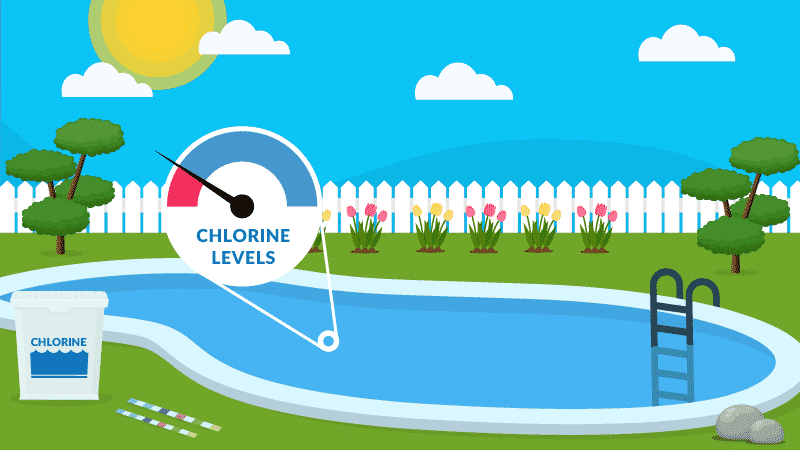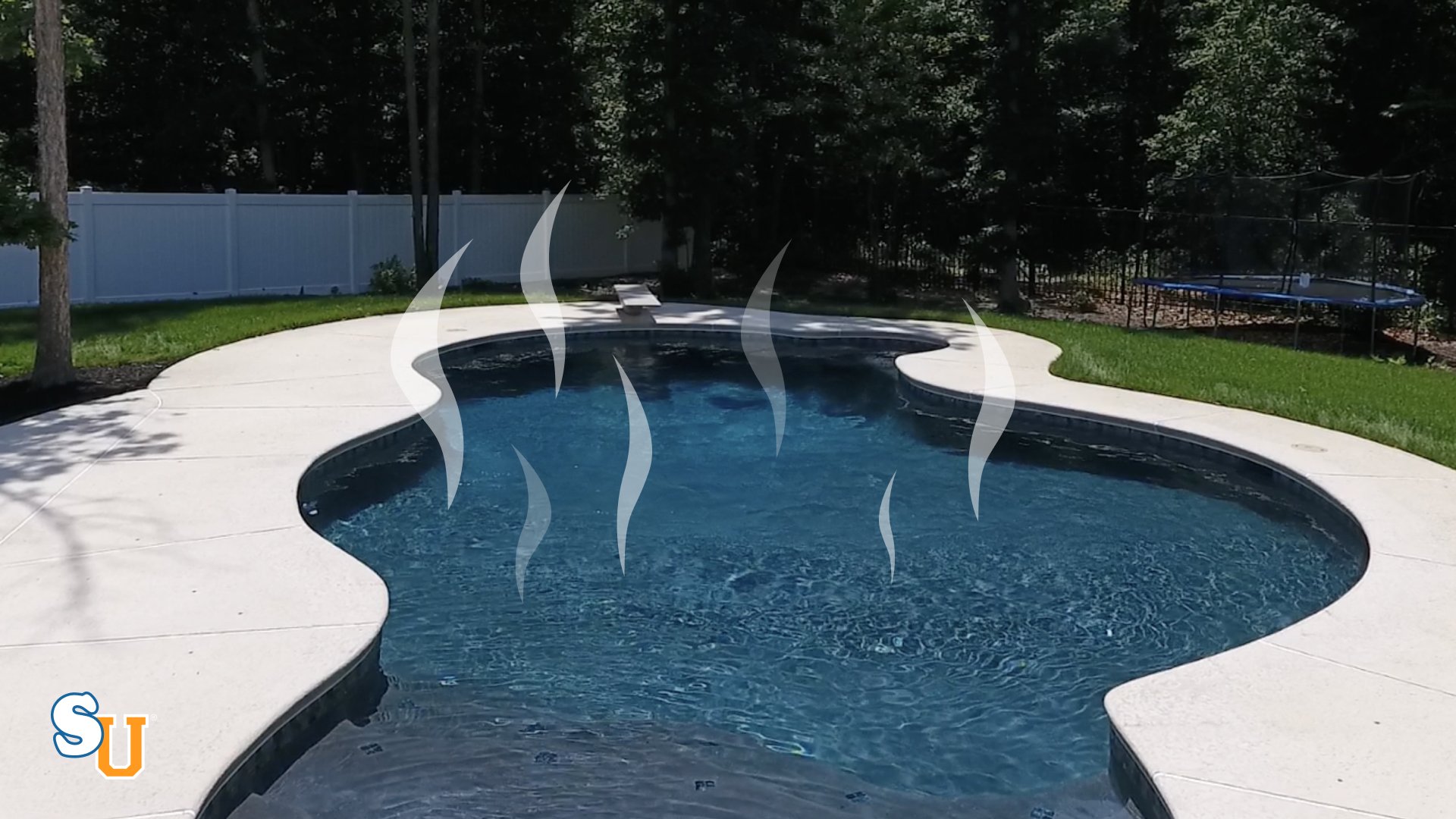When is it Safe to Swim After Adding Pool Chemicals?
Your levels, like pH and chlorine, should all be in range before anyone gets in the water. But how long does that usually take?
For most chemicals, you only need to wait 20 to 30 minutes before swimming again.
But there are some exceptions, like chlorine shock and calcium hardness increaser. So here’s a quick walkthrough on when it’s safe to swim after adding certain chemicals. Let’s dive in.
This is the ultimate guide to keeping your pool sparkling clean throughout the year that contains everything you need to know about taking care of your pool the right way. Including saltwater pools.
First, here are the chemicals that don’t require an extra long wait. For these common chemicals, you only need to wait 20 to 30 minutes to swim after adding them to the water:
- Alkalinity Increaser
- pH Increaser
- pH Decreaser
- Chlorine Stabilizer or CYA
- Clarifier
- Algaecide
Be sure to add your chemicals with the pump and filter running so they can circulate. And retest your water between dosing.
Remember, your water chemistry needs to be balanced before swimming. If your pH or chlorine is off, you’re at risk of skin or eye irritation. So make sure your chemistry is balanced before diving in. Finally, when in doubt, always follow the instructions and any recommended wait times on the chemical label.
Pool Chemicals That Require A Longer Wait Time to Swim
Okay, there are a few exceptions to the 20 to 30 minute rule. Here are the chemicals that require a longer wait time before jumping back in the water. Again, be sure to add chemicals with the pump and filter running.
1. Chlorine Shock
If you’re shocking your pool with chlorine, you’ll need to wait at least 8 hours and up to 24 hours before swimming again. Chlorine shock is a highly-concentrated dose of chlorine that can raise your chlorine up to 10 times the normal levels. So you’ll want to test your water after shocking and wait until your free chlorine drops back into range before using the pool again. If you need help with shocking your pool, be sure to check out our other video.
2. Muriatic Acid
Muriatic acid lowers your pH and alkalinity. Unfortunately, as an acid, its one of the more hazardous chemicals to handle. And it can create hot spots in the water that can burn and irritate swimmers’ skin. So if you’ve just added it to your pool, wait at least 30 minutes to an hour before swimming again. If you want more help safely adding muriatic acid to the water, be sure to check out our other video.
3. Chlorine Tablets, Granules, or Liquid Chlorine
Depending on the size of your pool and how much chlorine you’re adding, you’ll want to wait 2 to 4 hours or until your chlorine levels come into range before swimming again. Your chlorine needs to properly circulate and disperse before swimming again. And you don’t want any concentrated areas of chlorine in the water when you jump in. So run your pump and filter, test your water after a few hours, and wait until your chlorine levels are in range. And depending on your water flow and pool temperature, chlorine tablets may take extra time to dissolve.
4. Calcium hardness increaser
Wait at least several hours or overnight after adding calcium to the water. All of your water should circulate through the filtration system at least once after adding calcium hardness increaser. This helps it get through all of the plumbing and evenly disperse. So the wait time is less about swimmer safety and more about letting the calcium circulate properly. And as it mixes in, you don’t want to affect it with fluctuations in pH caused by swimmers.
5. Flocculant
Don’t swim with flocculant in the pool. Period. Flocculant works best in completely still water, allowing contaminants to clump together and sink to the bottom of the pool. So wait until the floc has finished working and you’ve vacuumed it all out before swimming again.
A fast-acting formula that drops cloudy water particles to the bottom of the pool so you can vacuum it out. Safe for all pools.
4 Ways We Can Help With Your Pool
- Pool Care Cheat Sheets (Free): Easy-to-use downloadable guides to help you keep track of taking care of your pool this year.
- The Pool Care Handbook: An illustrated guide to DIY pool care, including water chemistry, maintenance, troubleshooting, and more.
- The Pool Care Video Course: You’ll get 30+ step-by-step videos and a downloadable guide with everything you need to know about pool maintenance.
- The Pool Care App: Enter your water test results. Get a custom treatment plan. Know exactly what chemicals to add to keep your pool clear.










